-
Countries
-
Data and Analysis
-
Special Focus
-
Crisis Responses
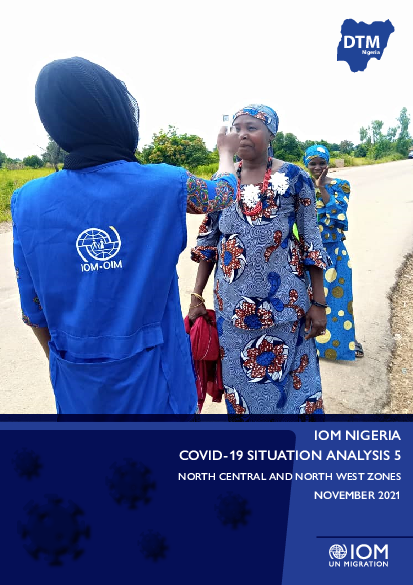
Contact
DTM Nigeria, AllUsersInDTMNigeria@iom.int
Language
English
Location
Nigeria
Period Covered
Aug 27 2021
Sep 11 2021
Activity
- Site Assessment
- Mobility Tracking
This Round 5 of the COVID-19 Situation Analysis is based on the assessment of knowledge, practice and impact of
the pandemic on internally displaced persons (IDPs) in conflict-affected communities in the geopolitical zones North
Central and North West Nigeria. Conducted by the Displacement Tracking Matrix (DTM) unit of the International
Organization for Migration (IOM), the report covers the period between 27 August and 11 September 2021 and
reflects trends from the states Benue, Kaduna, Kano, Katsina, Nasarawa, Plateau, Sokoto and Zamfara.
A total of 98,774 respondents – or 10% of the total IDP population in North Central and North West Nigeria -
were interviewed on a range of COVID-19 related indicators. Key informant interviews and focus group discussions
were the primary methods used for the assessment and the findings were corroborated with physical on-ground
observations.
Contact
DTM Libya, DTMLibya@iom.int
Language
English
Location
Libya
Snapshot Date
Sep 30 2021
Activity
- Site Assessment
- Mobility Tracking
Detention Centre Profiling is a component of IOM Libya’s Displacement Matrix programme. It is a data oriented tool that routinely provides specific sex and age demographic data and key sectorial information on individuals held in Libya’s detention Centres on the date of assessment.
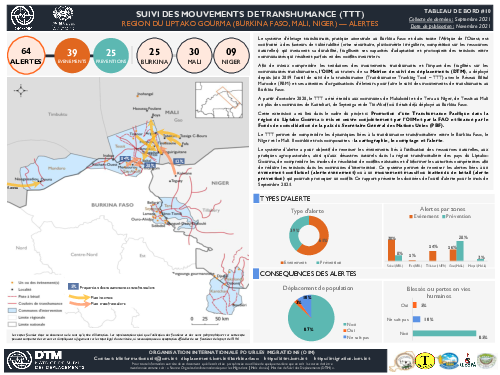
Contact
DTM Burkina Faso, bfinformationunit@iom.int
Language
French
Location
Burkina Faso
Period Covered
Sep 01 2021
Sep 30 2021
Activity
- Event Tracking
- Other
- Survey
- Flow Monitoring Survey
- Flow Monitoring
- Mobility Tracking
Afin de mieux comprendre les tendances des mouvements transhumants et l’impact des fragilités sur les communautés transhumantes, l’OIM, au travers de sa Matrice de suivi des déplacements (DTM), a déployé depuis juin 2019 l’outil de suivi de la transhumance (Transhumance Tracking Tool – TTT) avec le Réseau Bilital Maroobe (RBM) et ses antennes d’organisations d’éleveurs pour faire le suivi des mouvements de transhumants au Burkina Faso.
Le TTT permet de comprendre les dynamiques liées à la transhumance transfrontalière entre le Burkina Faso, le Niger et le Mali. Il combine trois composantes : la cartographie, le comptage et l’alerte.
Le système d’alerte a pour objectif de recenser les évènements liés à l’utilisation des ressources naturelles, aux pratiques agro-pastorales, ainsi qu’aux désastres naturels dans la région transfrontalière des pays du Liptako-Gourma, de comprendre les modes de résolution de conflits existants et d’informer les autorités compétentes afin de réduire les tensions dans les communes d’intervention. Ce système permet de recenser les alertes liées à un évènement conflictuel (alerte évènement) ou à un mouvement massif ou inattendu de bétail (alerte prévention) qui pourrait provoquer un conflit. Ce rapport présente les données de l’outil d’alerte pour le mois de Septembre 2021.
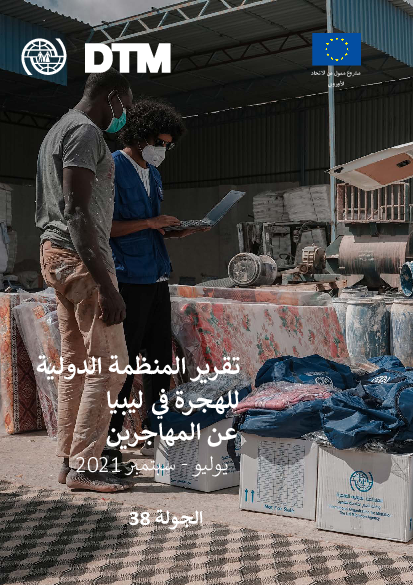
Contact
DTM Libya, DTMLibya@iom.int
Language
English
Location
Libya
Period Covered
Jul 01 2021
Sep 30 2021
Activity
- Mobility Tracking
- Baseline Assessment
أحصت مصفوفة تتبع النزوح في ليبيا وجود إجمالي 610.128 مهاجرا ينحدر أصلهم من أكثر من 44 جنسية وذلك في بلديات ليبيا الـ100 وخلال ما بين شهري يوليو وسبتمبر من سنة 2021 وفي إطار الجولة 38 من تجميع البيانات.
استمرّ عدد المهاجرين في الارتفاع خلال الفترة المشمولة بالتقرير على نفس منوال النّسق الذي بدأ في شهر يناير من سنة 2021. غير أنّ عدد المهاجرين في ليبيا لا يزال أدنى من الأعداد المسجّلة في فترة ما قبل انتشار الجائحة وأقلّ بكثير من العدد المسجّل في سنة 2019 بالنسبة إلى نفس فترة الدراسة (655.144 مهاجر خلال ما بين يونيو ويوليو 2019، الجولة 26). وقبل مطلع سنة 2021، تناقص عدد السكّان من المهاجرين في ليبيا تدريجيا على إثر بداية وباء كوفيد 19 والتباطؤ الاقتصادي الذي أفضى إلى ارتفاع نسبة البطالة، انخفاض فرص العمل المتوفّرة وتشديد المراقبة الأمنيةعلاوة على التقيدات المفروضة على التنقّل.
Contact
SouthSudanDTM@iom.int
Location
South Sudan
Activity
- Flow Monitoring Survey
- Flow Monitoring
Period Covered
Jul 01 2021 -Jul 31 2021
Flow monitoring aims to derive quantitative estimates of the flow of individuals through specific locations and to collect information about the profile, intentions and needs of the people moving and to quantify highly mobile populations by providing a picture of complex mobility dynamics.
Population Groups
Survey Methodology
Unit of Analysis Or Observation
Type of Survey or Assessment
Keywords
Geographical Scope
Administrative boundaries with available data
The current dataset covers the following administrative boundaries
Contact
SouthSudanDTM@iom.int
Location
South Sudan
Activity
- Flow Monitoring Survey
- Flow Monitoring
Period Covered
Jul 01 2021 -Jul 31 2021
Flow monitoring aims to derive quantitative estimates of the flow of individuals through specific locations and to collect information about the profile, intentions and needs of the people moving and to quantify highly mobile populations by providing a picture of complex mobility dynamics.
Population Groups
Survey Methodology
Unit of Analysis Or Observation
Type of Survey or Assessment
Keywords
Geographical Scope
Administrative boundaries with available data
The current dataset covers the following administrative boundaries
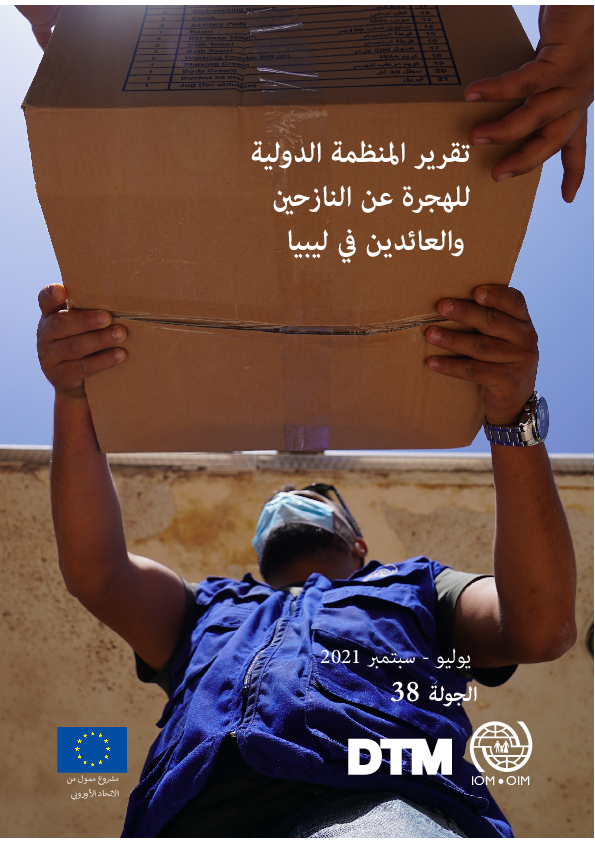
Contact
DTM Libya, DTMLibyateam@iom.int
Language
Arabic
Location
Libya
Period Covered
Jul 01 2021
Sep 30 2021
Activity
- Mobility Tracking
- Baseline Assessment
يعرض هذا التقرير البيانات المجمّعة فيما بين شهري يوليو وسبتمبر من سنة 2021 حول النازحين داخليا والعائدين. وتمثّل هذه البيانات والمستخلصات الجولة 38 من تتبع التنقل في ليبيا التي أجرتها مصفوفة تتبع النزوح. وقد ظلّ الوضع العام في ليبيا مستقرّا منذ أن تمّ التوقيع على اتفاق وقف إطلاق النّار في يوم 23 أكتوبر 2020 ولم يتم الإبلاغ عن أيّة حركات نزوح كبرى خلال هذه السنة، فيما تواصل نسق عودة الأسر النازحة مسبقا إلى مناطقها الأصلية. ومنذ شهر يونيو من سنة 2020، عندما تم تسجيل أعلى أرقام للنازحين في ليبيا بـ425.000 فرد نازح، إلى غاية شهر سبتمبر من سنة 2021، عندما عاد أكثر من نصف عدد النازحين سابقا إلى مناطق أصلهم. إلاّ أنّه مع نهاية شهر سبتمبر من سنة 2021، يستمرّ نزوح 199.949 فردا في ليبيا على الرغم من توقّف الأعمال العدائية والتحسّن العام في الوضع الأمني العام. ويدلّ هذا على أنّه فيما قد تحسّن الوضع الإنساني العام في ليبيا إلاّ أنّ البلاد لا زالت في طور الانتقال والتعافي بعد الأزمة.
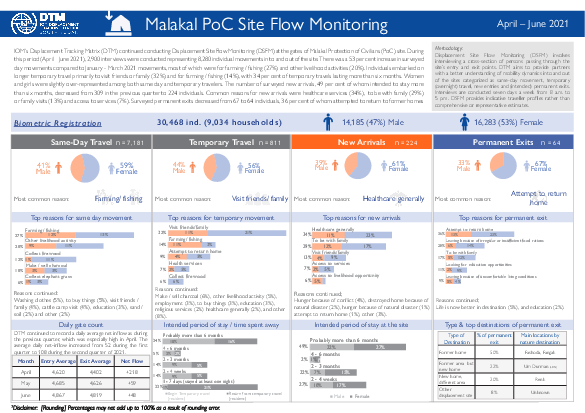
Contact
DTM South Sudan, SouthSudanDTM@iom.int
Language
English
Location
South Sudan
Period Covered
Apr 01 2021
Jun 30 2021
Activity
- Flow Monitoring
IOM’s Displacement Tracking Matrix (DTM) continued conducting Displacement Site Flow Monitoring (DSFM) at the gates of Malakal Protection of Civilians (PoC) site. During this period (April – June 2021), 2,900 interviews were conducted representing 8,280 individual movements in to and out of the site. There was a 53 per cent increase in surveyed day movements compared to January - March 2021 movements, most of which were for farming / fishing (27%) and other livelihood activities (20%). Individuals embarked on longer temporary travel primarily to visit friends or family (32%) and for farming / fishing (14%), with 34 per cent of temporary travels lasting more than six months. Women and girls were slightly over-represented among both same day and temporary travelers. The number of surveyed new arrivals, 49 per cent of whom intended to stay more than six months, decreased from 309 in the previous quarter to 224 individuals. Common reasons for new arrivals were healthcare services (34%), to be with family (29%) or family visits (13%) and access to services (7%). Surveyed permanent exits decreased from 67 to 64 individuals, 36 per cent of whom attempted to return to former homes.
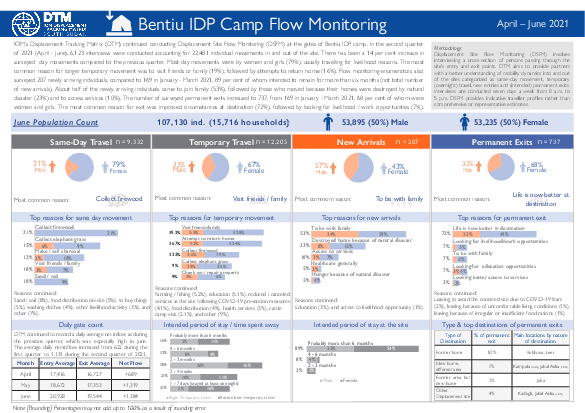
Contact
DTM South Sudan, SouthSudanDTM@iom.int
Language
English
Location
South Sudan
Period Covered
Apr 01 2021
Jun 30 2021
Activity
- Flow Monitoring
IOM’s Displacement Tracking Matrix (DTM) continued conducting Displacement Site Flow Monitoring (DSFM) at the gates of Bentiu IDP camp. In the second quarter of 2021 (April - June), 6,123 interviews were conducted accounting for 22,481 individual movements in and out of the site. There has been a 14 per cent increase in surveyed day movements compared to the previous quarter. Most day movements were by women and girls (79%), usually travelling for livelihood reasons. The most common reason for longer temporary movement was to visit friends or family (19%), followed by attempts to return home (16%). Flow monitoring enumerators also surveyed 207 newly arriving individuals, compared to 169 in January - March 2021, 89 per cent of whom intended to remain for more than six months (not total number of new arrivals). About half of the newly arriving individuals came to join family (53%), followed by those who moved because their homes were destroyed by natural disaster (23%) and to access services (10%). The number of surveyed permanent exits increased to 737, from 169 in January - March 2021, 68 per cent of whom were women and girls. The most common reason for exit was improved circumstances at destination (72%), followed by looking for livelihood / work opportunities (7%).

Contact
DTM South Sudan, SouthSudanDTM@iom.int
Language
English
Location
South Sudan
Period Covered
Apr 01 2021
Jun 30 2021
Activity
- Flow Monitoring
IOM’s Displacement Tracking Matrix (DTM) continued conducting Displacement Site Flow Monitoring (DSFM) at Wau Masna Collective Centre. In the second quarter of 2021 (April – June), 1,454 interviews were conducted, representing 3,571 individual movements. This quarter recorded a 73 per cent decrease in surveyed day movements, as people travel in and out of the camp to pursue livelihood activities including farming / fishing (15%), to make purchases (10%), make / sell charcoal (9%), and to access healthcare services (9%). Longer temporary movements were primarily for farming or fishing activities (32%), visiting
friends or family (20%), and avoiding the congested site due to concerns of COVID-19 (9%), with 51 per cent lasting more than six months. Masna recorded an increased number of new arrivals (284) between April and June compared to 53 in the previous quarter, 86 per cent of whom came because of insecurity / conflict related issues. DTM encounted only three persons intending to permanently leave the collective centre during the second quarter of 2021.